Volatility, Growth and Financial Crises
This research group analyses the build-up of financial vulnerabilities and real consequences of financial crises. Different policy shocks and the causal reaction of macroeconomic aggregates are identified. Early-warning models describe the cyclical nature of financial vulnerabilities.
IWH Data Project: Financial Stability Indicators in Europe
Research Cluster
Financial Resilience and RegulationYour contact

- Department Macroeconomics
EXTERNAL FUNDING
01.2022 ‐ 12.2023
Sovereign Risk Shocks
05.2017 ‐ 09.2019
Early Warning Models for Systemic Banking Crises: The Effect of Model and Estimation Uncertainty
01.2018 ‐ 12.2018
International Monetary Policy Transmission
Refereed Publications

Global Food Prices and Monetary Policy in an Emerging Market Economy: The Case of India
in: Journal of Asian Economics, 2016
Abstract
This paper investigates a perception in the political debates as to what extent poor countries are affected by price movements in the global commodity markets. To test this perception, we use the case of India to establish in a standard SVAR model that global food prices influence aggregate prices and food prices in India. To further analyze these empirical results, we specify a small open economy New-Keynesian model including oil and food prices and estimate it using observed data over the period 1996Q2 to 2013Q2 by applying Bayesian estimation techniques. The results suggest that a big part of the variation in inflation in India is due to cost-push shocks and, mainly during the years 2008 and 2010, also to global food price shocks, after having controlled for exogenous rainfall shocks. We conclude that the inflationary supply shocks (cost-push, oil price, domestic food price and global food price shocks) are important contributors to inflation in India. Since the monetary authority responds to these supply shocks with a higher interest rate which tends to slow growth, this raises concerns about how such output losses can be prevented by reducing exposure to commodity price shocks.

The Diablo 3 Economy: An Agent Based Approach
in: Computational Economics, No. 2, 2016
Abstract
Designers of MMOs such as Diablo 3 face economic problems much like policy makers in the real world, e.g. inflation and distributional issues. Solving economic problems through regular updates (patches) became as important to those games as traditional gameplay issues. In this paper we provide an agent framework inspired by the economic features of Diablo 3 and analyze the effect of monetary policy in the game. Our model reproduces a number of features known from the Diablo 3 economy such as a heterogeneous price development, driven almost exclusively by goods of high quality, a highly unequal wealth distribution and strongly decreasing economic mobility. The basic framework presented in this paper is meant as a stepping stone to further research, where our evidence is used to deepen our understanding of the real-world counterparts of such problems. The advantage of our model is that it combines simplicity that is inherent to model economies with a similarly simple observable counterpart (namely the game environment where real agents interact). By matching the dynamics of the game economy we can thus easily verify that our behavioral assumptions are good approximations to reality.

Real Effective Exchange Rate Misalignment in the Euro Area: A Counterfactual Analysis
in: Review of International Economics, No. 1, 2016
Abstract
The European debt crisis has revealed severe imbalances within the Euro area, sparking a debate about the magnitude of those imbalances, in particular concerning real effective exchange rate misalignments. We use synthetic matching to construct a counterfactual economy for each member state in order to identify the degree of these misalignments. We find that crisis countries are best described as a combination of advanced and emerging economies. Comparing the actual real effective exchange rate with those of the counterfactuals gives evidence of misalignments before the outbreak of the crisis: all peripheral countries appear strongly and significantly overvalued.

Financial Constraints on Growth: Comparing the Balkans to Other Transition Economies
in: Eastern European Economics, No. 4, 2015
Abstract
This article applies an adjusted growth diagnostic approach to identify the currently most binding constraint on financing growth in the West Balkan countries. Since this group of economies faces both structural and systemic transformation problems, the original supply-side approach might not be sufficient to detect the most binding constraint. The results of the analysis indicate that the binding constraint on credit and investment growth in the region is the high and increasing share of nonperforming loans, primarily in the household sector, due to policy failures. This article compares the Balkan countries to a group of advanced transition economies. Single-country and panel regressions indicate that demand-side factors do not play a constraining role on growth in the West Balkan countries, but they do in the advanced transition economies.
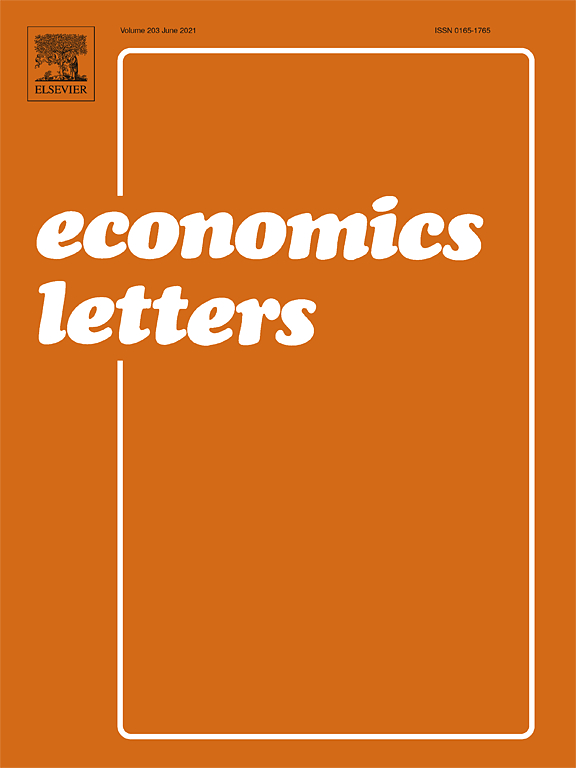
Risk and Return - Is there an Unholy Cycle of Ratings and Yields?
in: Economics Letters, 2015
Abstract
After every major financial crisis, the question about the responsibility of the rating agencies resurfaces. Regarding government bonds, the most frequently voiced concern targeted “unreasonably” bad ratings that might trigger capital flights and increasing risk premia which sanction further rating downgrades. In this paper we develop a multivariate, nonparametric version of the Pesaran type cointegration model that allows for nonlinearities, to show that a unique equilibrium between ratings and sovereign yields exists. Therefore, we have to reject the concern that there is an unholy cycle leading to certain default in the long run.
Working Papers
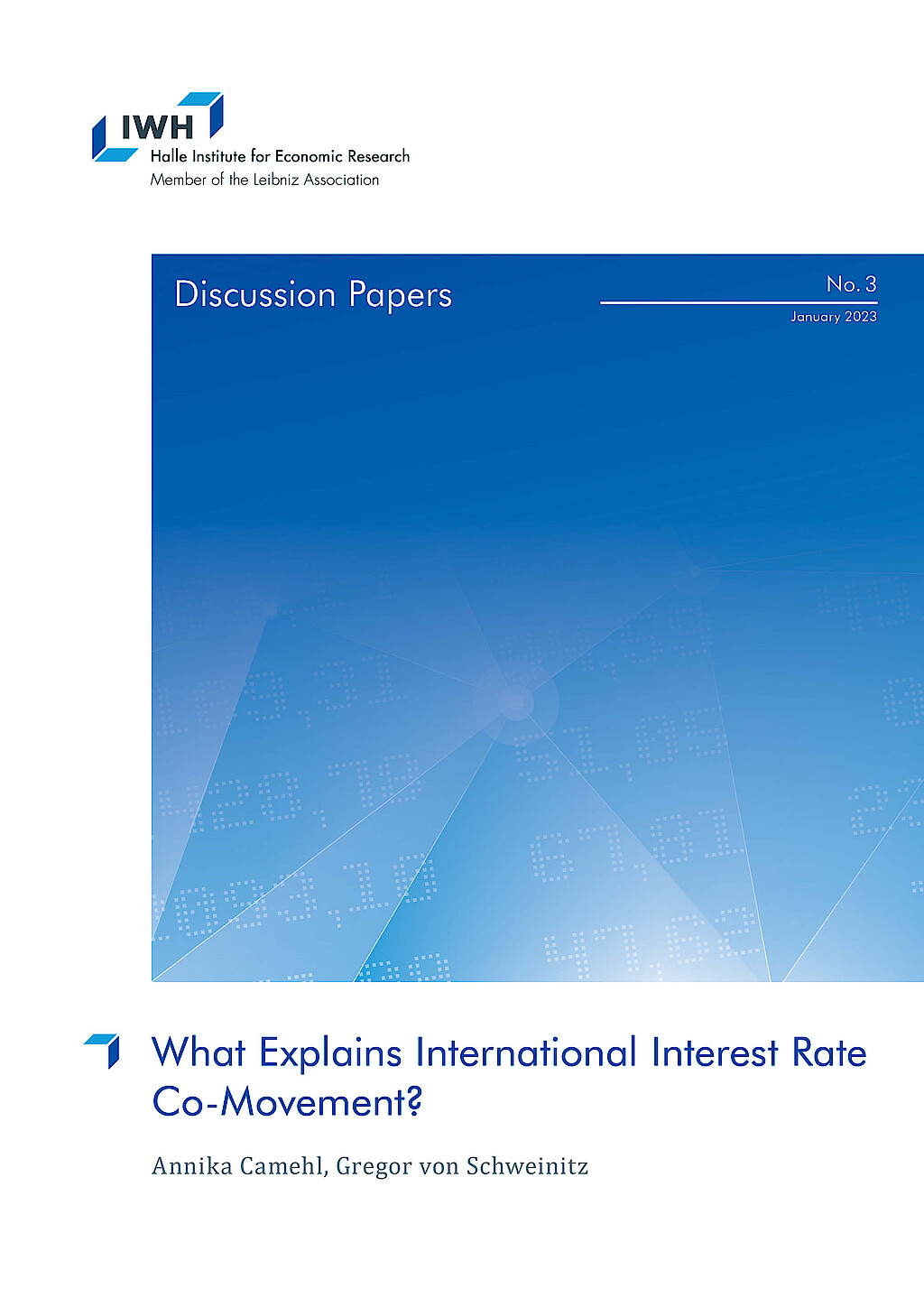
What Explains International Interest Rate Co-Movement?
in: IWH Discussion Papers, No. 3, 2023
Abstract
We show that global supply and demand shocks are important drivers of interest rate co-movement across seven advanced economies. Beyond that, local structural shocks transmit internationally via aggregate demand channels, and central banks react predominantly to domestic macroeconomic developments: unexpected monetary policy tightening decreases most foreign interest rates, while expansionary local supply and demand shocks increase them. To disentangle determinants of international interest rate co-movement, we use a Bayesian structural panel vector autoregressive model accounting for latent global supply and demand shocks. We identify country-specific structural shocks via informative prior distributions based on a standard theoretical multi-country open economy model.

The Impact of Active Aggregate Demand on Utilisation-adjusted TFP
in: IWH Discussion Papers, No. 9, 2022
Abstract
Non-clearing goods markets are an important driver of capacity utilisation and total factor productivity (TFP). The trade-off between goods prices and household search effort is central to goods market matching and therefore drives TFP over the business cycle. In this paper, I develop a New-Keynesian DSGE model with capital utilisation, worker effort, and expand it with<i> goods market search-and-matching (SaM)</i> to model non-clearing goods markets. I conduct a horse-race between the different capacity utilisation channels using Bayesian estimation and capacity utilisation survey data. Models that include goods market SaM improve the data fit, while the capital utilisation and worker effort channels are rendered less important compared to the literature. It follows that TFP fluctuations increase for demand and goods market mismatch shocks, while they decrease for technology shocks. This pattern increases as goods market frictions increase and as prices become stickier. The paper shows the importance of non-clearing goods markets in explaining the difference between technology and TFP over the business cycle.
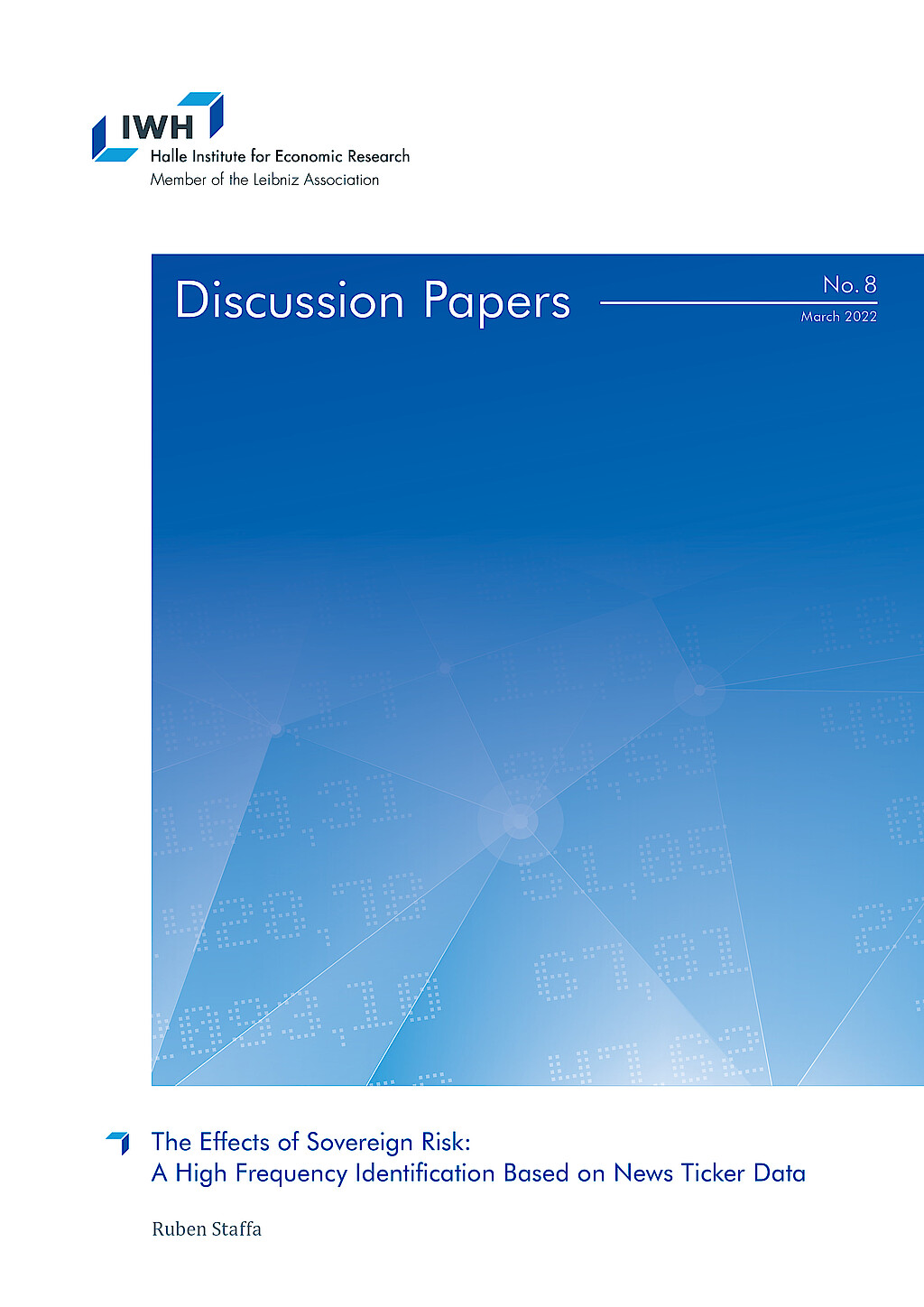
The Effects of Sovereign Risk: A High Frequency Identification Based on News Ticker Data
in: IWH Discussion Papers, No. 8, 2022
Abstract
This paper uses novel news ticker data to evaluate the effect of sovereign risk on economic and financial outcomes. The use of intraday news enables me to derive policy events and respective timestamps that potentially alter investors’ beliefs about a sovereign’s willingness to service its debt and thereby sovereign risk. Following the high frequency identification literature, in the tradition of Kuttner (2001) and Guerkaynak et al. (2005), associated variation in sovereign risk is then obtained by capturing bond price movements within narrowly defined time windows around the event time. I conduct the outlined identification for Italy since its large bond market and its frequent coverage in the news render it a suitable candidate country. Using the identified shocks in an instrumental variable local projection setting yields a strong instrument and robust results in line with theoretical predictions. I document a dampening effect of sovereign risk on output. Also, borrowing costs for the private sector increase and inflation rises in response to higher sovereign risk.
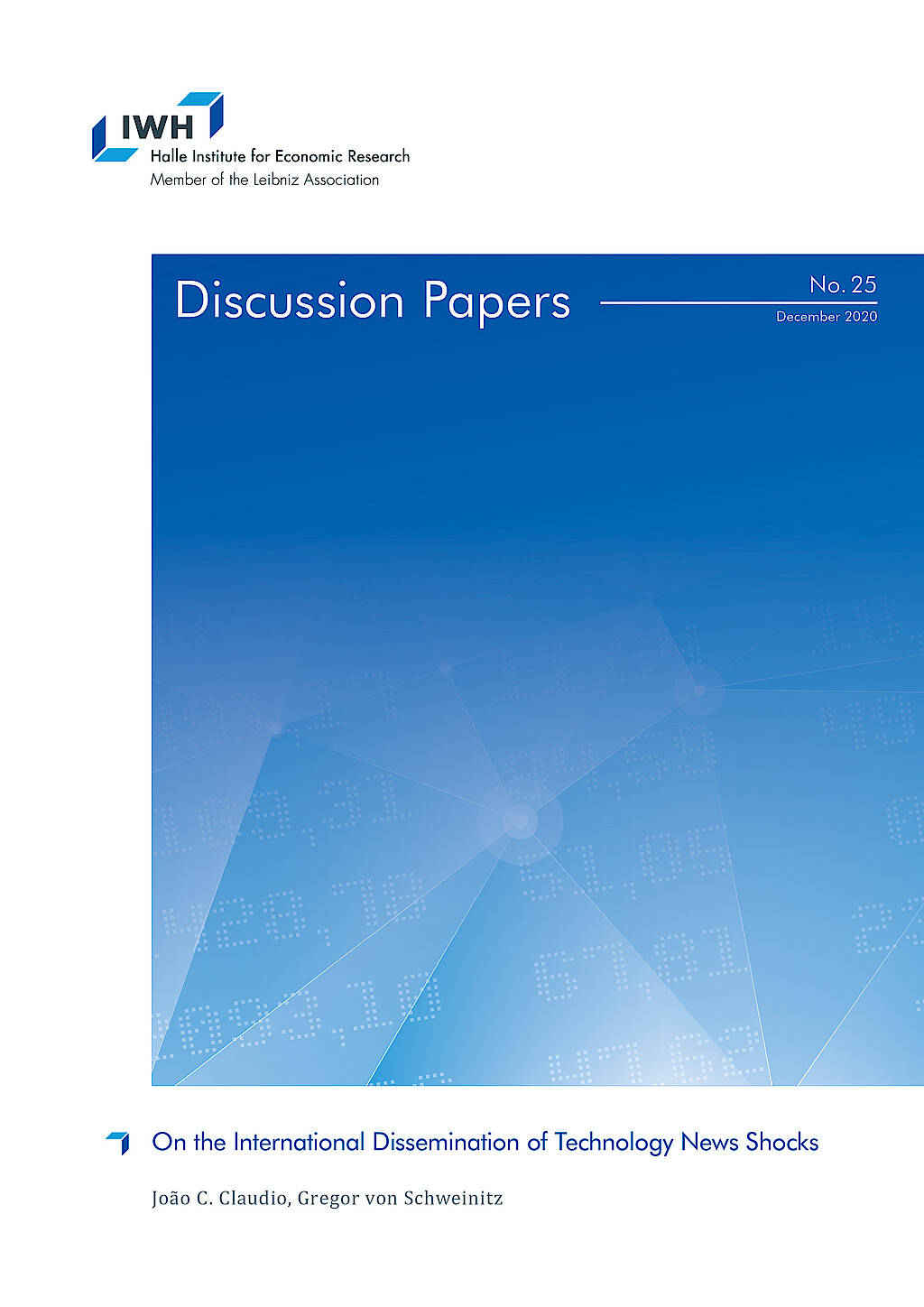
On the International Dissemination of Technology News Shocks
in: IWH Discussion Papers, No. 25, 2020
Abstract
This paper investigates the propagation of technology news shocks within and across industrialised economies. We construct quarterly utilisation-adjusted total factor productivity (TFP) for thirteen OECD countries. Based on country-specific structural vector autoregressions (VARs), we document that (i) the identified technology news shocks induce a quite homogeneous response pattern of key macroeconomic variables in each country; and (ii) the identified technology news shock processes display a significant degree of correlation across several countries. Contrary to conventional wisdom, we find that the US are only one of many different sources of technological innovations diffusing across advanced economies. Technology news propagate through the endogenous reaction of monetary policy and via trade-related variables. That is, our results imply that financial markets and trade are key channels for the dissemination of technology.
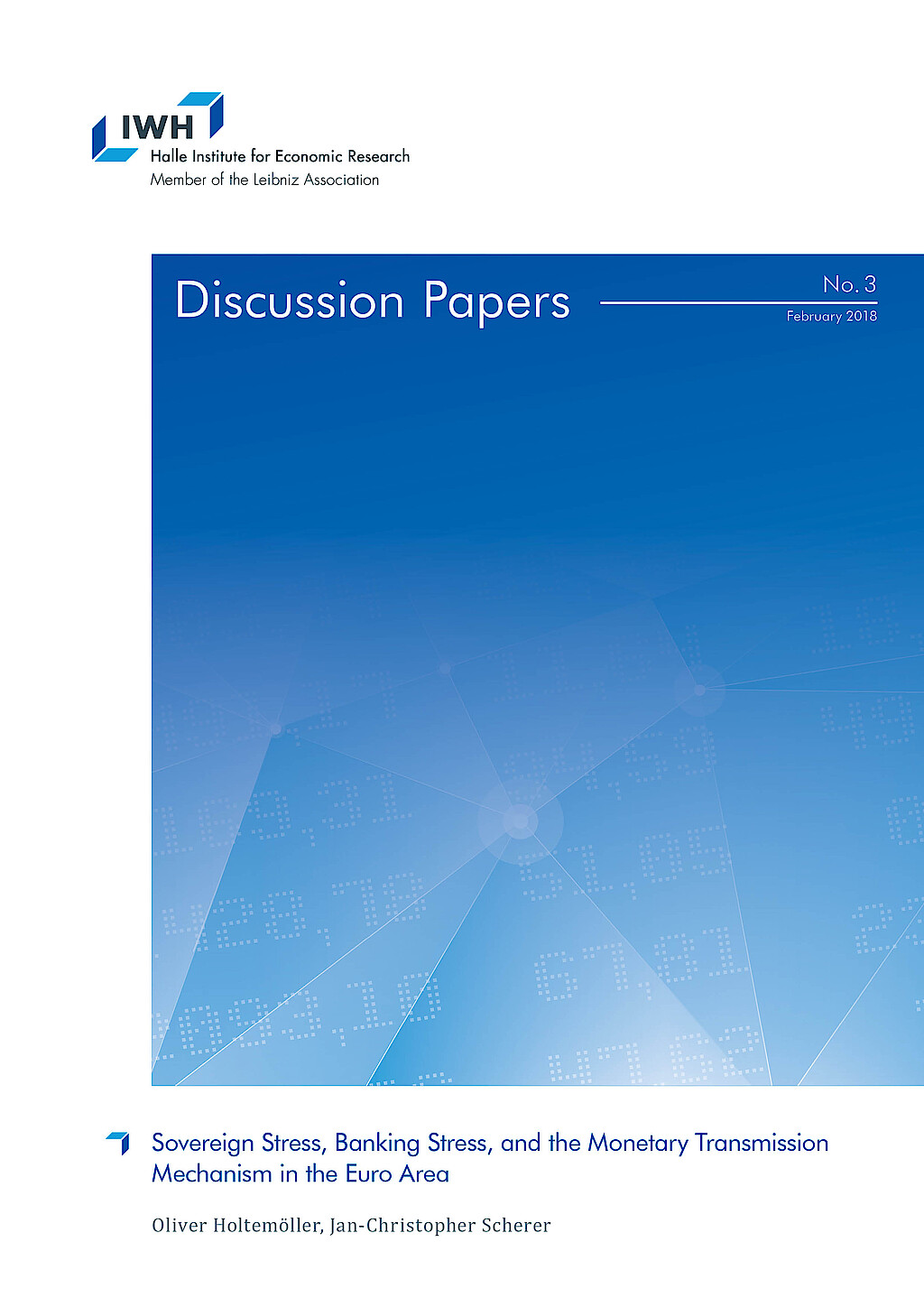
Sovereign Stress, Banking Stress, and the Monetary Transmission Mechanism in the Euro Area
in: IWH Discussion Papers, No. 3, 2018
Abstract
In this paper, we investigate to what extent sovereign stress and banking stress have contributed to the increase in the level and in the heterogeneity of nonfinancial firms’ refinancing costs in the Euro area during the European debt crisis and how they did affect the monetary transmission mechanism. We identify the increasing effect of government bond yield spreads (sovereign stress) and the share of non-performing loans (banking stress) on firms’ financing costs using an instrumental-variable approach. Moreover, we estimate both sources of stress to have significantly impaired the monetary transmission mechanism during the European debt crisis.














